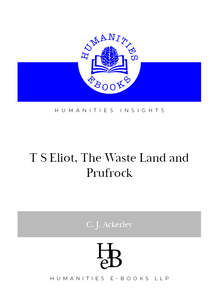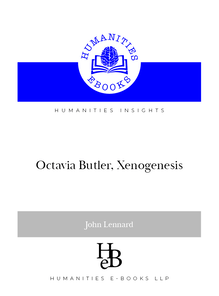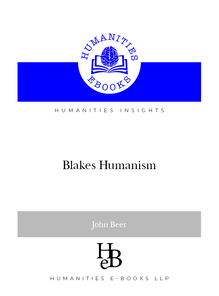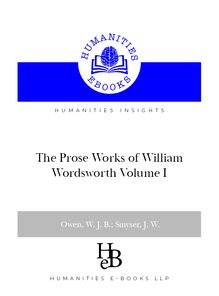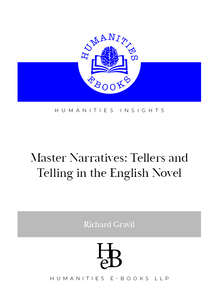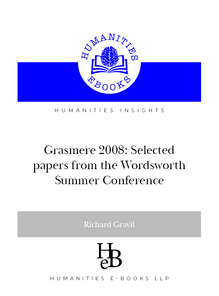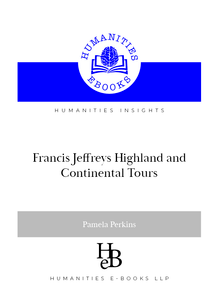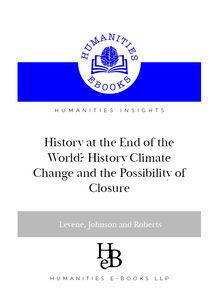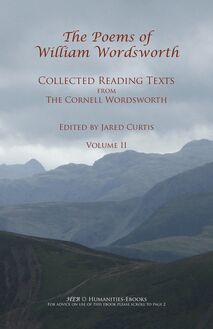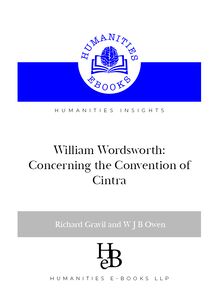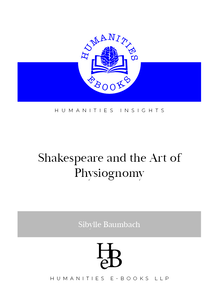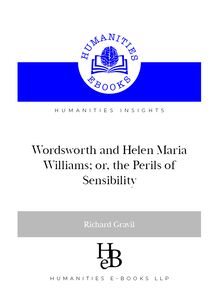-
 Univers
Univers
-
 Ebooks
Ebooks
-
 Livres audio
Livres audio
-
 Presse
Presse
-
 Podcasts
Podcasts
-
 BD
BD
-
 Documents
Documents
-
- Cours
- Révisions
- Ressources pédagogiques
- Sciences de l’éducation
- Manuels scolaires
- Langues
- Travaux de classe
- Annales de BEP
- Etudes supérieures
- Maternelle et primaire
- Fiches de lecture
- Orientation scolaire
- Méthodologie
- Corrigés de devoir
- Annales d’examens et concours
- Annales du bac
- Annales du brevet
- Rapports de stage
La lecture à portée de main
782 pages
English
Découvre YouScribe en t'inscrivant gratuitement
Je m'inscrisPoems of William Wordsworth,The: Collected Reading Texts from The Cornell Wordsworth, Volume II , livre ebook
Découvre YouScribe en t'inscrivant gratuitement
Je m'inscris
Obtenez un accès à la bibliothèque pour le consulter en ligne
En savoir plus
En savoir plus
782 pages
English
Obtenez un accès à la bibliothèque pour le consulter en ligne
En savoir plus
En savoir plus

Description
The Poems of William Wordsworth presents Wordsworth's verse in reading texts chosen from those offered in the twenty-one volumes of the Cornell Wordsworth. Here is the poetry in the form the poet gave it when first completed, either in its manuscript state or in a published book.
Sujets
Informations
| Publié par | Humanities eBooks |
| Date de parution | 11 janvier 2021 |
| Nombre de lectures | 0 |
| EAN13 | 9781847600868 |
| Langue | English |
| Poids de l'ouvrage | 2 Mo |
Informations légales : prix de location à la page 0,0898€. Cette information est donnée uniquement à titre indicatif conformément à la législation en vigueur.
Extrait
The Poems of William Wordsworth
Collected Reading Texts from The Cornell Wordsworth
Edited by Jared Curtis
Volume II
HEB☼HumanitiesEbooks For advice on use of this ebook please scroll to page 2
Using this Ebookt
*This book is designed to be read in single page view, using the ‘ît page’ command. * To navigate through the contents use the hyperlinked ‘Bookmarks’ at the left of the screen. * To search, click the search symbol. * For ease of reading, use <CTRL+L> to enlarge the page to full screen, and return to normal view using < Esc >. * Hyperlinks (if any) appear in Blue Underlined TeXt.
Permissions
Your purchase of this ebook licenses you to read this work on-screen.
You may print a copy of the book for your own use but copy and paste functions are disabled.
No part of this publication may be otherwise reproduced or transmitted or distributed without the prior written permission of both the copyright owner and the publisher.
Making or distributing copies of this book would constitute copyright infringement and would be liable to prosecution. Thank you for respecting the rights of the author.
The Poems of William Wordsworth
Collected Reading Texts from The Cornell Wordsworth Series
Volume II
Edited by Jared Curtis
HEB☼Humanities-Ebooks, LLP
© Jared Curtîs, 2009, 2011, 2014
he Autor as asserted îs rîgt to be îdentîied as te autor of tîs Work în accordance wît te Copyrîgt, Desîgns and Patents Act 1988.
Fîrst publîsed byHumanitiesEbooks, LLP, Tîrrîl Hall, Tîrrîl, Penrît CA10 2JE.
4t prîntîng, corrected Marc 2014
Cover îmage, towards Glaramara©Rîcard Gravîl
he readîng texts of Wordswort’s poems used în tîs volume are from te Cornell Wordswort serîes, publîsed by Cornell Unîversîty Press, Sage House, 512 East State Street, Itaca, NY 14850. Copyrîgt © Cornell Unîversîty. Volumes are avaîlable at:ttp://www.cornellpress.cornell.edu
he Ebook îs avaîlable to Lîbrarîes from Ebrary, EBSCO and Ingram Dîital and to prîvate purcasers exclusîvely fromttp://www.umanîtîes-ebooks. co.uk
he paperback versîon îs avaîlable from all booksellers but at a substantîal dîs-count exclusîvely fromttp://www.troubador.co.uk
ISBN 978-1-84760-086-8 Ebook ISBN 978-1-84760-090-5 Paperback
Contents
PrefaceAcknowledgmentsNote on the TeXt
7 9 9
The PrelUde(1805–1806)11 Benjamin the Waggoner&c(1806)250 The TUft of Primroses, with Other Late Poems for The ReclUse(1808–1828) The TUft of Primroses 274 St. PaUl’s 291 To the CloUds 292 Composed when a probability existed of oUr being obliged to qUit Rydal MoUnt as a Residence 294 The ExcUrsion(1814) The ExcUrsion(1814) 298 The Peasant’s Life 566 The Shepherd of Bield Crag 568 The White Doe of Rylstone; Or the Fate of the Nortons(1815)571 The Force of Prayer; Or the FoUnding of Bolton Priory. A Tradition 632 Translations of Chaucer and Virgil (1801–1831) The Prioress’s Tale 635 The CUcKoo and the Nightingale 642 TroilUs and Cresida 654 The Manciple, (from the PrologUe) and his Tale 659 Aeneid 667 Georgics 751 Notes752 IndeX to Poems780
6
The Poems of William Wordsworth
Contents of Volumes I and III
Volume 1 Early Poems and Fragments, 1785–1797An Evening WalK(1793) Descriptive SKetches(1793) AdventUres on SalisbUry Plain(1795–1799) The Borderers(1797) The RUined CottageandThe Pedlar(1798, 1803–1804) The Ruined Cottage (1798) The Pedlar (1803–1804) Lyrical Ballads, and Other Poems, 1797–1800 Lyrical Ballads and Other Poems (1798) Lyrical Ballads and Other Poems, in Two Volumes (1800) Other Poems, 1798–1800 Peter Bell, a Tale(1799) The PrelUde(1798–1799) Home at Grasmere(1800–1806) Poems, in Two VolUmes, and Other Poems, 1800–1807 Poems, in Two Volumes (1807) Other Poems, 1800–1807
Volume III Shorter Poems(1807–1820)The PrelUde(1824–1829) Sonnet Series and Itinerary Poems (1820–1845) The River DUddon. A Series of SonnetsEcclesiastical SKetchesMemorials of a ToUr on the Continent, 1820Yarrow Revisited, and Other Poems, Composed (two excepted) dUring a ToUr in Scotland, and on the English Border, in the AUtUmn of 1831Sonnets Composed or SUggested dUring a toUr in Scotland, in the SUmmer of 1833Memorials of a ToUr in Italy. 1837Sonnets Upon the PUnishment of Death.In Series Sonnets Dedicated to Liberty and OrderLast Poems(1821–1850)
11 82 97 123 151
270 286
312 377 476 487 530 558
587 718
11 144
349 368 427
469
488 524 555 561 568
Preface
7
The Cornell Wordsworth series, under the general editorship of Stephen Parrish, began appearing in1975. Through controversy and acclaim, the editions have steadily appeared over three decades, coming to completion in2007with the publication of the twenty-îrst volume—an edition ofThe ExcUrsion—and a supplementary volume of indeXes and guides for the series. The purpose of this edition is to collect all of the earliest complete reading teXts garnered from the twenty-one volumes in the series. The earliest records of Wordsworth’s poetic composition date from 1785, when he was îfteen years old, and the latest date from1847, when he was seventy-seven. In the interim he composed hundreds of poems, thousands of verses, not all of which reached—or survived in—a “completed” state. All of those that did are included here. If William Butler Yeats was remarkable for reinventing his poetic self, Wordsworth might be said to have constantly “revisited” his. Three of his lyrics bear the revealing sequential titles, “Yarrow Unvisited” (1803), “Yarrow Visited” (1814), and “Yarrow Revisited” (1831). In the îrst, the poet-traveler prefers his imagined Yarrow—the Yarrow of Scots balladeers Nicol Burne, John Logan, and William Hamilton— to the physical one. In the second, the “genuine” Yarrow engenders an image that
Will dwell with me—to heighten joy, And cheer my mind in sorrow.
And the third pays tribute to his friend and fellow poet, Walter Scott, with whom he toured the Yarrow valley before the ailing Scott departed for Italy: in this time of “change and changing,” he prays that the valley maintain its power to restore “brightness” to “the soul’s deep valley.” Signiîcant threads of Wordsworth’s development as a poet are embodied in these three elegiac tributes. They are all writ-ten in a ballad stanza that Wordsworth borrowed and adapted from the older Scots poets. A glance through the pages of this volume will illustrate the varied verse forms the poet adopted and transformed
8
The Poems of William Wordsworth
over his long career. Obvious favorites were his own meditative style of blank verse and the sonnet in its various guises. But he employed a variety of meters, stanzaic patterns, and rhyme schemes in produc-ing poems ranging from ballads to autobiography, satirical squibs to verse romance, from epitaphs to royal tributes. The methods, too, of the three “Yarrows” are instructive. The primacy of the imagination is suggested in the poet’s reluctance to visit the famed valley; upon visiting the place, the poet’s response is to preserve it in memory as a “spot of time” to bind his days, “each to each” as a remedy for future sorrow; and on revisiting the valley he acknowledges that sorrow and attempts to recharge the healing power of memory. Another eXample of “revisiting” can be found in the restless energy that Wordsworth displayed over his entire writing life in composing sonnets, both singly, as apparently instant responses to present scene, public event, or personal history, and in series, building both narra-tive and argument through this highly adaptive form. And, occupying the center of this metaphor are the several attempts to write the story of his inner life as a poet, here represented in the three versions of The PrelUde. Annotation is conîned largely to reproducing the notes Wordsworth published with his poems. Editorial commentary has been kept to a minimum, given the rich resource in each of the Cornell Wordsworth volumes, leaving room instead for the poetry. For information about the source of the teXt, its compositional history, its teXtual and inter-pretive annotation, and its social and historical conteXt, the reader is referred to the appropriate volumes in the series, cited in the editor’s notes at the end of each volume.
Acknowledgments
9
For the impetus to prepare such an edition and for his continuing and enthusiastic support for its completion I owe thanks to Stephen Parrish. I have gained from fruitful discussions with James Butler, Stephen Gill, and Mark Reed from the beginning stages, and for making my task easier by helping with proofreading and other tasks, I especially thank James and Mark. I owe thanks, too, to the edi-tors who prepared each of the editions from which the reading teXts making up this edition were drawn. All of them are acknowledged by name, and their work cited, in the editor’s notes. None of these generous scholars can be held responsible for any aws in detail or judgment. I am pleased to acknowledge the Wordsworth Trust for graciously permitting the use of materials from their collections and Cornell University Press for both the permission and the assistance needed to prepare this gathering of reading teXts from their landmark series of Wordsworth editions. And for wise counsel and technical assistance in the enterprize of producing an electronic teXt of these volumes, I am grateful to Richard Gravil of Humanities-Ebooks.
Note on the Text
The source for each poem is the earliest and most complete reading teXt presented in the volume in the Cornell Wordsworth series that contains that poem. With the few eXceptions noted below, no attempt has been made to include the many alternate readings and revisions that these volumes provide. Early evidence of Wordsworth revisiting his own work is found in the two versions ofPity(“Now too while o’er the heart we feel”) and in the “eXtracts” fromThe Vale of Esthwaite; both the original poems and their later development are included. In the case ofThe PrelUde, each of the three versions that stood as com-plete is represented. In 1799 Wordsworth revised the ending toThe RUined Cottage, within a year of composing the îrst ending, and in 1803–1804 incorporated much of the earlier poem in an eXpanded
10
The Poems of William Wordsworth
portrait of the Pedlar inThe Pedlar. Wordsworth then incorporated large parts of both poems intoThe ExcUrsion1814. These three in distinct poems are included. Wordsworth occasionally folded a free-standing sonnet into a subsequent sonnet series or sequence, in which case the free-standing sonnet is repeated in its later conteXt. The aim throughout has been to present clean reading teXts of Wordsworth’s poems. In most cases the poet’s and his earliest print-ers’ orthography has not been altered, though some eXceptions have been made for consistency. To distinguish a poem originally pub-lished without a title from poems that immediately precede or follow it, I have used the familiar anthologist’s convention of quoting the îrst line of the poem as its “title,” even though neither Wordsworth nor his publishers did so. A few editorial devices have proven necessary, especially where the source for the reading teXt is a manuscript. For further comment on the gaps and irregularities in the manuscript sources, see the origi-nal Cornell editions.
[
]
[word]
— **
___
A gap in the source, either left by the poet, or caused by a damaged manuscript.
Within the brackets are missing letters or words, supplied from a different authorial source, or by the editor; in a few instances, brackets enclose lines that Wordsworth apparently canceled, but without indicating a substitute.
Asterisks and solid lines, employed by Wordsworth to indicate omissions or breaks in the teXt.
A double solid line, used by the editor to indicate an inter-ruption in the teXt.
Wordsworth’s long notes, prose dedications, and other prose writ-ings connected to the poems, are gathered in the “Notes” section at the end of the volume, and their presence is indicated in the on-page notes. Jared Curtis Seattle, Washington
-
 Univers
Univers
-
 Ebooks
Ebooks
-
 Livres audio
Livres audio
-
 Presse
Presse
-
 Podcasts
Podcasts
-
 BD
BD
-
 Documents
Documents
-
Jeunesse
-
Littérature
-
Ressources professionnelles
-
Santé et bien-être
-
Savoirs
-
Education
-
Loisirs et hobbies
-
Art, musique et cinéma
-
Actualité et débat de société
-
Jeunesse
-
Littérature
-
Ressources professionnelles
-
Santé et bien-être
-
Savoirs
-
Education
-
Loisirs et hobbies
-
Art, musique et cinéma
-
Actualité et débat de société
-
Actualités
-
Lifestyle
-
Presse jeunesse
-
Presse professionnelle
-
Pratique
-
Presse sportive
-
Presse internationale
-
Culture & Médias
-
Action et Aventures
-
Science-fiction et Fantasy
-
Société
-
Jeunesse
-
Littérature
-
Ressources professionnelles
-
Santé et bien-être
-
Savoirs
-
Education
-
Loisirs et hobbies
-
Art, musique et cinéma
-
Actualité et débat de société
- Cours
- Révisions
- Ressources pédagogiques
- Sciences de l’éducation
- Manuels scolaires
- Langues
- Travaux de classe
- Annales de BEP
- Etudes supérieures
- Maternelle et primaire
- Fiches de lecture
- Orientation scolaire
- Méthodologie
- Corrigés de devoir
- Annales d’examens et concours
- Annales du bac
- Annales du brevet
- Rapports de stage
Signaler un problème
YouScribe
Le catalogue
Le service
© 2010-2024 YouScribe
